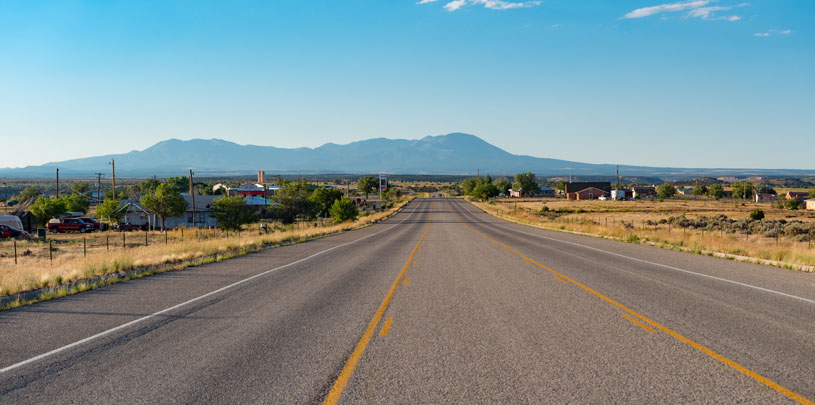
 by Aaron Paul, Staff Attorney
by Aaron Paul, Staff Attorney
After years of hiding behind court deadlines, depositions, and legal briefs, I’ve run out of excuses for my editors here at the Grand Canyon Trust who have insisted that I finally write my first blog post for you, my dear readers, about something we all love talking about: losing. And though broadcasting one’s failures on the Internet is about as fun as, say, splitting the backside of one’s breeches at the middle school dance (I can only imagine), I have to admit that I’ve got a good deal of expertise on the subject. I’ve lost marathons. I’ve lost half-mile sprints. I’ve lost so many footraces that I’ve lost count of them all. I’ve lost spelling bees. (Who pronounces that middle “o” in sophomoric, anyway?) In the second grade, I lost a gal named Donna to my better-looking friend Jack. I’ve lost hope about ever getting over that one. (Jack also beat me in footraces.) I’ve lost teeth, my car keys, sleep, and true love. I’ve lost my shirt on bad bets. I once lost my suit pants on the streets of Washington D.C. I’ve lost track of time, my cool, and my train of thought. I’ve lost my dignity on a pair of Nordic skis on the north rim of the Grand Canyon. I once lost my lunch in the South Dakota Badlands.
Until three weeks ago, though, I had not yet lost a profoundly important Clean Air Act case. And when I think about that, I find myself at a loss for words.
Well, recall that in 2012, the White Mesa uranium mill’s owner and operator — a company called Energy Fuels — reported to Utah state regulators that one of the radioactive waste pits at the mill had emitted more radon than federal regulations allow. For that year and the next, the state concluded that radon emissions from mill wastes were violating federal law. All the while, we at the Trust took the view that the company was failing to clean up nearly 200 acres of radioactive wastes at the mill as quickly as federal law requires. Believing state regulators had done too little to redress these problems, we sued, using authority that Congress created to enable We the People to enforce the Clean Air Act when the government doesn’t.
After three and a half years of feuding in federal court, we lost.
To simplify a multifaceted case, we basically asked the court to look at a federal regulation’s text and ask what a typical English speaker would take the regulation to mean. The words of the regulation, after all, are where textual interpretation should begin and end if the text is clear. The company staked a competing claim. Because the regulation is technical, Energy Fuels insisted, professional state regulators, not courts, should say what it means. The short version — and I’m omitting a lot of nuance here — is that the company’s argument won out.
Whether that’s the right interpretation of the law or not depends mostly on your view of the permissible meanings that can be drawn from the words used in the regulation. I’ll leave that question to your judgment, with the aid, if you choose, of our arguments, Energy Fuels’ arguments, and the court’s order.

The White Mesa Mill, seen from the air. The main pilot area for testing the proposed cleanup plan at the mill is circled. ECOFLIGHT
The consequences of that interpretation are less metaphysical. Though the U.S. Environmental Protection Agency sought a quarter-century ago to force uranium mills to incrementally and promptly clean up their radioactive wastes, and though the White Mesa Mill has been running for over 35 years, and though for more than two decades at least one of its waste pits has been full of radioactive waste and ready for reclamation (think covering the waste with dirt, plants, and rocks), not one square inch of waste at the mill has been fully and finally reclaimed. Had we won our lawsuit, we would’ve sought a court order to inspire some serious reclamation hustle. Without that order, the current plan at the mill is to carry out a postage-stamp-sized, seven-year pilot test of the company’s proposed reclamation plan, piling yet more delay on a cleanup that should’ve been finished long ago.
Despite our loss, we have little doubt our lawsuit catalyzed some positive changes at the mill. After we filed, Energy Fuels decided to stop using a small pit at issue in our case that we viewed as a contamination risk. While the lawsuit was pending, the company also sought the state’s approval of reclamation deadlines for the first time, a major point of dispute in our case. And since we sued, the company has so far managed its waste pits to keep average annual radon emissions below the law’s limits.
Dour navel-gazing is one option, but to that we say no thank you. We’re going to stand our ground. The main state licenses governing the mill’s operations and cleanup plan are up for renewal. We’ve submitted comments to the state decision-makers and we won’t be backing down from them. And focusing scrutiny on the mill’s dubious business of processing uranium-bearing wastes so that the resulting “tailings” can be discarded at the mill remains a priority. If Energy Fuels fully paid for the environmental and public health costs of mining uranium around the Grand Canyon and discarding radioactive wastes at White Mesa, could the company turn a profit making nuclear fuel? We doubt it.
Let’s lose no time.
A small victory in the legal case challenging Daneros uranium mine, near Bears Ears National Monument.
Read MoreGroundwater pumping at a uranium mine near the Grand Canyon will affect the canyon's springs, scientists says.
Read MoreA rally in Salt Lake City followed by a spiritual walk in White Mesa demonstrate the Ute community's determination to see uranium mill close.
Read More